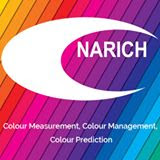- Compare one colour to another
- Obtain actual colour data
- Predict a colour formulation
This post will deal with the first task only.
Compare one colour to another
Colour Comparison is usually the first and simplest task to carry out.
There are many reasons WHY we want to compare colours, like batch to batch colour continuity, quality control or to ensure one part of an assembly matches another, say in the auto industry. Colour Comparison can also be useful for Color Grading like with Flour, Fruits and Fruit Juices etc.
We have done this visually since the first time colour continuity was important. Perhaps an ancient potter or carpet weaver saw this need.
As soon as we compare colour visually, we run into a number of problems. The first is, do two people agree on the comparison, due to possible colour perception defects in one or the other observer. The next problem is, the colour seems to change at different times of day, in different physical settings. Following from this, are two observers able to agree (An opinion) on a colour. Often a supplier and a customer have different expectations which "Colour" their opinions. (Seeing red as the saying goes!)
It soon becomes clear that we need a stable reliable device that can "See" colours like humans do, and relate the data without any judgement or opinion. Enter the Spectrophotometer or Chroma meter (Colorimeter).
Studies into HOW we perceive colour reveal that the perception (In the brain) is influenced by a number of factors:
- Illuminant Source (natural, artificial)
- Size of object
- Angle of observation
- Amount of data observed
- Proximity of the object to other objects of other colours
There are about 14 "Contextual" influences on colour perception comparison, which will be dealt with in more detail in future posts, but the conclusion is that the perception of colour varies, and can not be said to be a property of an object like say weight or dimensions, but are subject to the Contextual Conditions" under which the observation was made.
To this end, the CIE (International Commission on Illumination) an international body regulating standards, prescribe the various contextual specifications in detail.
In this post, let us assume that we are comparing two colours using one CIE certificated Spectrophotometer with a known setup and using a known CIE approved Colour Space Equation (Say L*a*b)
- Prepare an object for measurement
- Measure the object
- The instrument will return L*a*b values.
These values are almost meaningless to the observer, as it is very difficult to envisage what could has been measured from the values returned. In many cases however, Quality Assurance people who are number fixated WILL look at this number, and then compare it to a "Correct" number on record. IF (Huge IF) the values were obtained UNDER THE SAME CONTEXTUAL CONDITIONS, you may infer that the numbers are close or far, but what does the difference between one number and another visually mean? If you think you will get the same numbers measurement to measurement, its a fantasy. Thats not how this works.
The quick solution to Number Madness is to use a "Target" and "Sample" approach.
A Target will be the master colour you wish to achieve, and the Sample colour will be the current batch etc.
If you measure BOTH the Target (Known wanted colour) and the Sample at the same time under the same contextual settings, you can then expect to have some sane method of comparison. The CIE L*a*b standard also come with a Colour Difference equation known as Delta ( ∆ ) L*a*b.
If you set the Instrument or software to give a Colour Difference reading, you can then see what the implication of the differences may be.
So L = Darkness (Black = 0) or Whiteness (White = 100)
*a = Redness in the + side or Greenness in the - side. The numbers indicate the INTENSITY of redness
or greenness.
or greenness.
*b = Yellowness on the + side and Blueness on the - side, and the numbers the intensity as for *a
By comparing the DIFFERENCE between a Target and Sample, and by reducing the difference to an AVERAGE of the difference of Target to Sample you will end up with a single value say ∆ 1.5 . This is now a meaningful number. For instance a difference of 3 is clearly visible to the human eye, and 0.5 is hard to tell.
Future Posts will cover more detail, and you can looke now at the advanced information here


No comments:
Post a Comment
Join our Light Conversation!